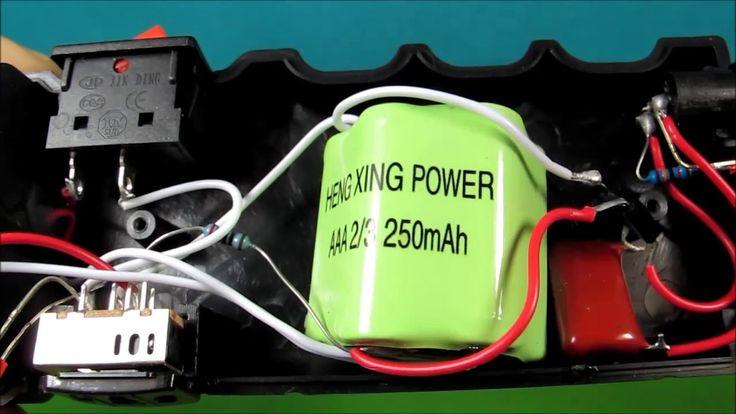Table of Contents
- Identifying Common Symptoms of Faulty Stun Gun Wiring
- Essential Tools and Safety Precautions for Effective Troubleshooting
- Step-by-Step Techniques to Diagnose Wiring Issues Accurately
- Best Practices for Repairing and Maintaining Stun Gun Electrical Connections
- Final Thoughts
Identifying Common Symptoms of Faulty Stun Gun Wiring
When your stun gun starts to malfunction, the root cause often lies within its internal wiring. Common symptoms to watch for include inconsistent shock delivery, which can feel weaker or completely absent during use. You might also notice that the stun gun hesitates before activating or shuts off unexpectedly, pointing toward possible wiring shorts or loose connections. Additionally, if the stun gun heats up unusually fast or emits a faint burning smell, these are red flags indicating damaged insulation or frayed wires that require immediate attention.
Aside from physical symptoms, pay attention to the stun gun’s indicator lights. Blinking or dim LEDs during activation often signal faulty wiring or poor electrical contact inside the device. Other signs include unusual noises such as buzzing or crackling during discharge, which suggest arcing within the circuitry. Here’s a quick checklist to help you identify wiring issues:
- Intermittent shock functionality or failure to deliver consistent power
- Unexpected shutoffs or delays in activation
- Visible overheating or odd smells
- Irregular indicator light patterns when attempting to use
- Unusual sounds during discharge
Essential Tools and Safety Precautions for Effective Troubleshooting
Before diving into the wiring of a stun gun, it’s crucial to assemble the right set of tools to ensure precision and safety. Essential equipment includes a multimeter to test voltage continuity, insulated screwdrivers, and needle-nose pliers for handling small components with accuracy. Additionally, having a magnifying glass can assist in inspecting delicate wiring without damage. Proper lighting is indispensable, so a bright LED lamp or headlamp is highly recommended to avoid missing subtle wire breaks or shorts during the inspection process.
Safety should never be compromised. Always disconnect the stun gun from any power source before starting the diagnostic process to prevent accidental shocks. Wearing insulated gloves and safety goggles provides a protective barrier against unexpected sparks and debris. Working on a non-conductive surface, such as a rubber mat, further minimizes the risk of electrical hazards. Remember, understanding the device’s schematic and adhering to manufacturer guidelines is paramount to avoid damage to the unit or personal injury.
Step-by-Step Techniques to Diagnose Wiring Issues Accurately
Begin by performing a visual inspection of all wiring connections. Look for signs of corrosion, fraying, or loose terminals, which are common culprits behind intermittent faults or complete failure. Carefully trace every wire from the stun gun’s power source to its trigger mechanism, ensuring continuity without any breaks or weak spots. Using a digital multimeter on the continuity test mode can quickly identify if any segment is compromised. Remember to also check for proper grounding as poor grounds often mimic wiring malfunctions.
Next, isolate and test individual components connected by the wiring harness. Create an unnumbered checklist to systematically verify each part:
- Fuse integrity – a blown fuse might be the simplest fix.
- Switch operation – check for smooth, consistent engagement without resistance.
- Wire resistance – unusually high resistance in any wire indicates internal damage.
- Connector continuity – ensure connectors are seated properly and oxidization-free.
By isolating each element and confirming its electrical function, you can confidently pinpoint the exact location of the wiring fault, streamlining repairs and restoring your stun gun’s reliability.
Best Practices for Repairing and Maintaining Stun Gun Electrical Connections
When working on stun gun electrical connections, maintaining precision and care is paramount to ensure longevity and safety. Always start by disconnecting the power source completely before inspecting or handling any wiring to avoid accidental discharge. Use a multimeter to check for continuity and detect any weak points or breaks in the circuit. If you encounter corrosion or dirt buildup on connection points, gently clean these areas with an alcohol-based solution and a soft brush to restore proper conductivity without causing damage.
For repairs, opt for soldering over twisting wires as it provides a more stable and secure electrical connection, reducing the risk of loosening during regular use. When soldering, ensure you use a heat-resistant insulating material such as heat shrink tubing to cover exposed wires; this not only protects against short circuits but also extends the lifespan of your connections. Regularly inspect the wiring for any signs of wear or brittleness, and replace any damaged cables promptly to maintain optimal performance of your stun gun.
- Always use quality tools and materials designed for electrical repairs.
- Label wires during disassembly to ensure correct reassembly.
- Avoid overstretching or bending wires excessively to prevent internal breaks.
- Test connections thoroughly before reassembling and returning the stun gun to service.
Final Thoughts
In conclusion, troubleshooting faulty stun gun wiring may seem intimidating at first, but with the right approach and attention to detail, it becomes a manageable task. Remember to prioritize safety at every step, use the proper tools, and methodically inspect connections for any signs of wear, corrosion, or damage. Whether you’re doing routine maintenance or addressing an unexpected malfunction, these guidelines will help ensure your stun gun functions reliably when you need it most. Stay informed, stay careful, and don’t hesitate to seek professional assistance if you encounter complex issues beyond your expertise. Your safety-and the effectiveness of your equipment-depend on it.Check Our Other Blogs
- StunGun – Your Trusted Source for Stun Guns, Laws, and Self-Defense Tips
- PepperSprayLaws – Your Trusted Resource for Pepper Spray Information
- StunGunLaws – Your Trusted Guide to Stun Gun Legality and Safety





